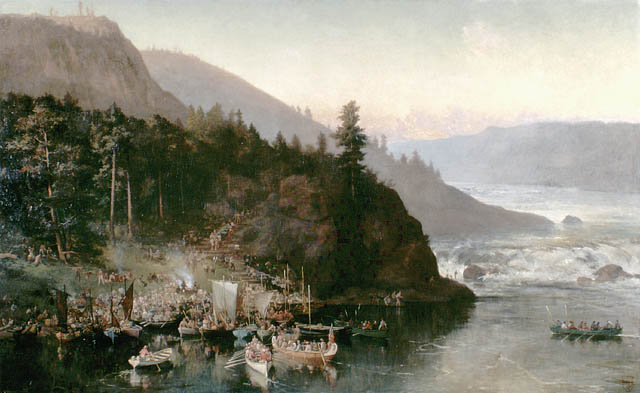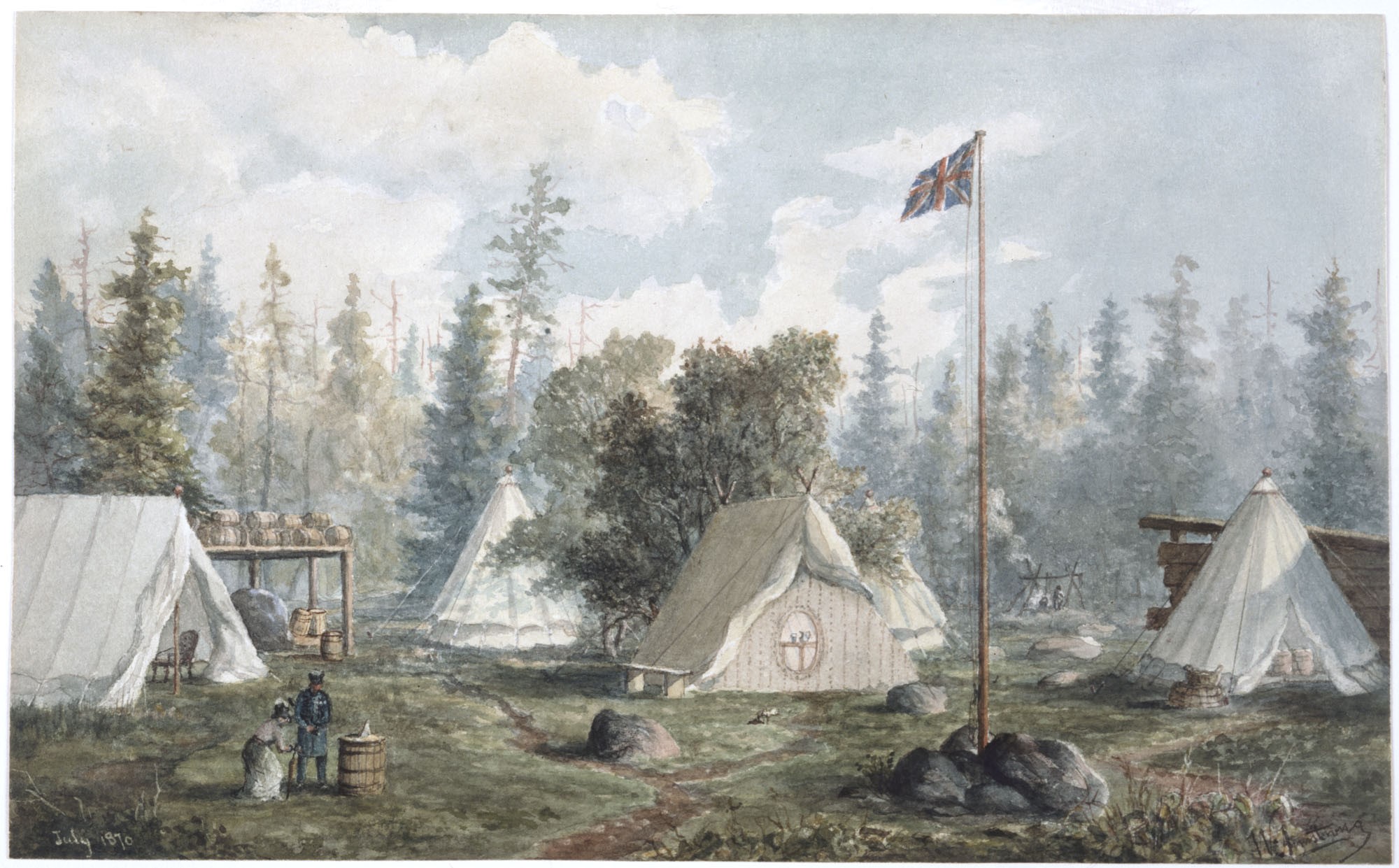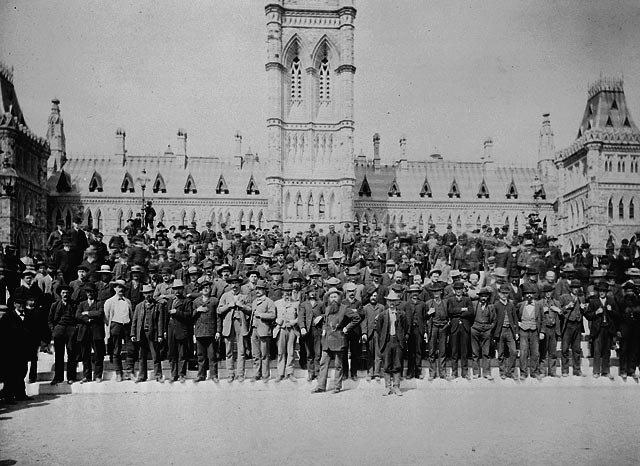The Red River Expedition (May–August 1870) was a military expedition to oversee the transfer of territory from the Hudson’s Bay Company (HBC) to Canada and the transition of power from Louis Riel’s provisional government to one headed by the new lieutenant-governor of Manitoba. The expedition was led by Garnet Joseph Wolseley.

Red River Resistance
In March 1869, the HBC agreed to sell Rupert’s Land and the North-Western Territory to the Dominion of Canada. Métis living in the Red River Settlement, however, were concerned about the influx of Anglo-Protestant immigrants from Ontario. Determined to protect their religion, culture and land rights, they resisted the imposition of federal control. By December 1869, they had established a provisional government led by Louis Riel. In March 1870, the provisional government sent delegates to Ottawa to negotiate the entry of Assiniboia — Red River and the surrounding area — into Confederation. (See Red River Resistance and Confederation and Manitoba.)
At the same time, a small group of armed Canadians gathered at Portage la Prairie, hoping to disband the provisional government. They were quickly arrested and imprisoned at Upper Fort Garry. One of the men, Thomas Scott — a member of the Orange Lodge of Ontario — was sentenced to death by firing squad. From then on, Protestant Ontario wanted retribution for Scott’s death.
Despite this, the provisional government’s delegates obtained an agreement with the Canadian government. Through the Manitoba Act, the Province of Manitoba entered Confederation. As part of the deal, the federal government agreed to reserve 1.4 million acres for the children of Métis residents of Manitoba; the province would also be bilingual.

Red River Expedition
To reassure Ontario, the federal government decided to send a military expedition to oversee the transfer of territory and transition of power from the provisional government to the new administration under Lieutenant-Governor A.G. Archibald. It wasn’t, however, part of the agreement between the provisional and federal governments. Although the expedition was supposed to be peaceful, not punitive, Louis Riel feared its arrival.
The expedition was led by British army officer Colonel Garnet Joseph Wolseley, then Deputy Quartermaster-General in Canada. In total, it comprised 700 militia — the 1st (Ontario) Rifles and the 2nd (Quebec) Rifles — and about 400 British troops — a battalion of regulars from the 60th Rifles, as well as detachments from the Royal Engineers, Royal Artillery, Army Service Corps and Army Hospital Corps. Wolseley also recruited 400 voyageurs (including 100 Haudenosaunee) to help transport the soldiers.
The trip from Toronto to Port Arthur (Thunder Bay) was relatively easy, as the soldiers could travel by train and steamship. However, the journey from there to Fort Garry was arduous. There were no overland roads, so the men had to traverse the Canadian Shield via waterways and portages in boats measuring about nine metres long. In 13 weeks, they covered more than 1,100 km of rivers, lakes, and rapids and made nearly 50 portages through swamps and thick forests. The voyageurs played a crucial role, helping transport the soldiers safely through the wilderness. All survived the journey.
By the time they arrived at Fort Garry in late August, Riel had fled to the United States. The British troops returned east, but the militia regiments remained to garrison the new province. Although the regiments were disbanded in 1871, many militiamen settled in the area.

Did you know?
Garnet Wolseley was particularly impressed by the Haudenosaunee boatmen involved in the Red River Expedition. When he was appointed to lead a mission to Sudan in 1884, he requested 300 Indigenous voyageurs from the Canadian governor general for an expedition up the Nile River (see Nile Expedition).

 Share on Facebook
Share on Facebook Share on X
Share on X Share by Email
Share by Email Share on Google Classroom
Share on Google Classroom
